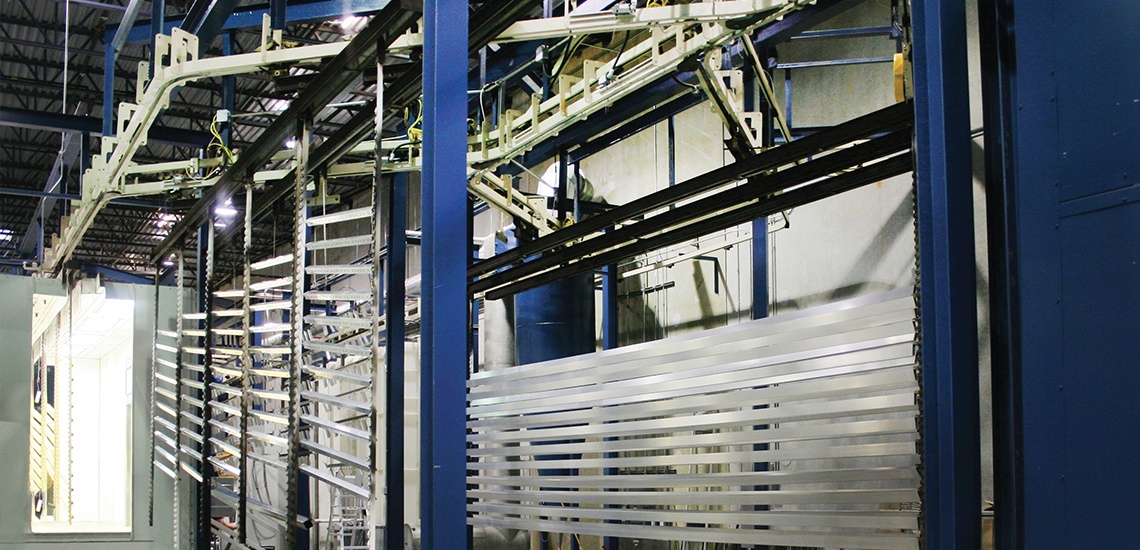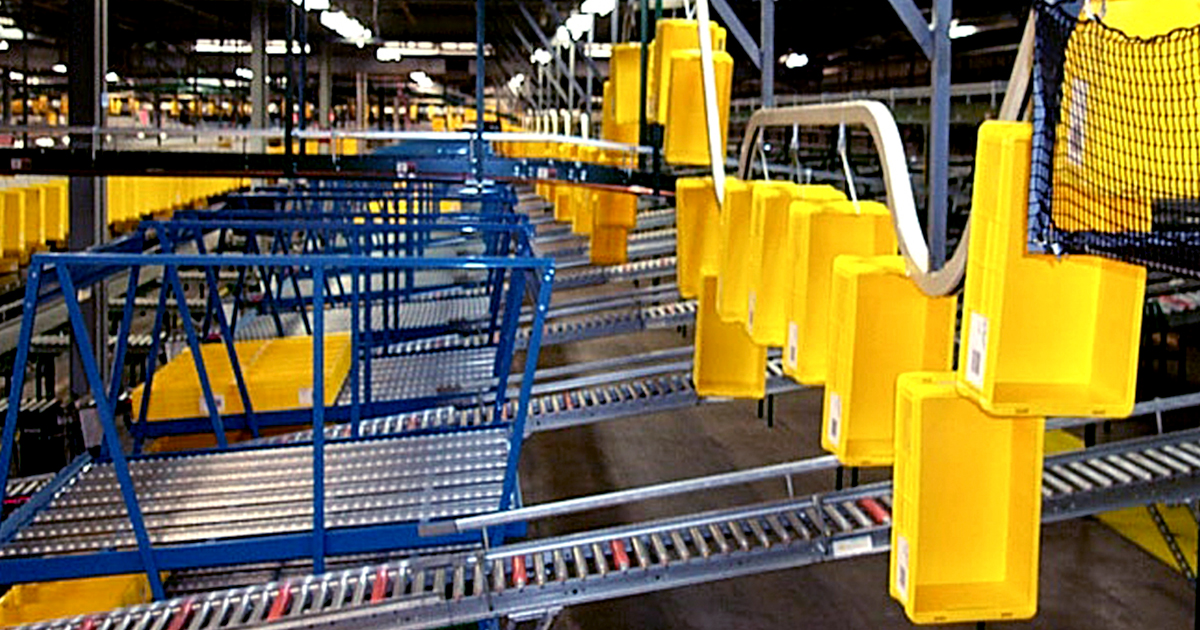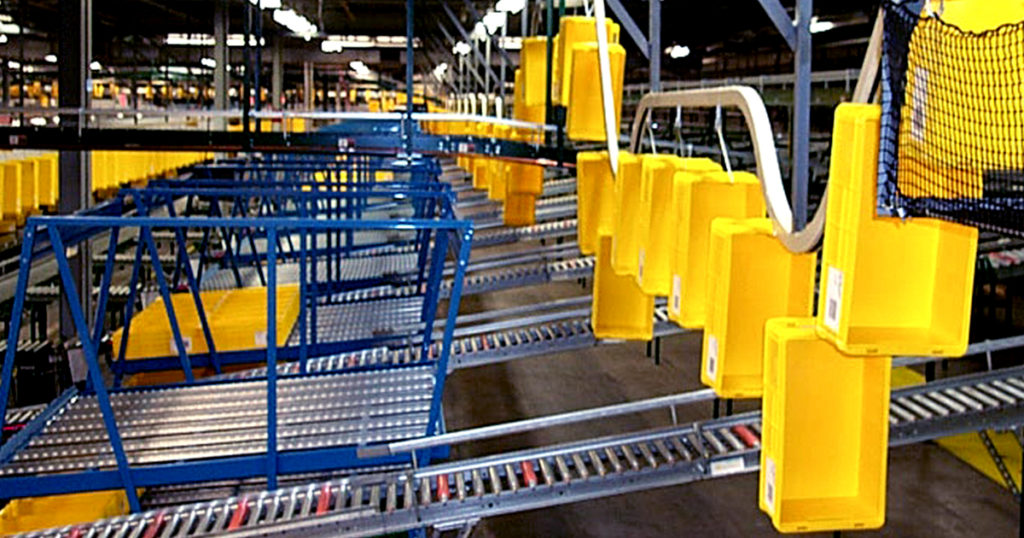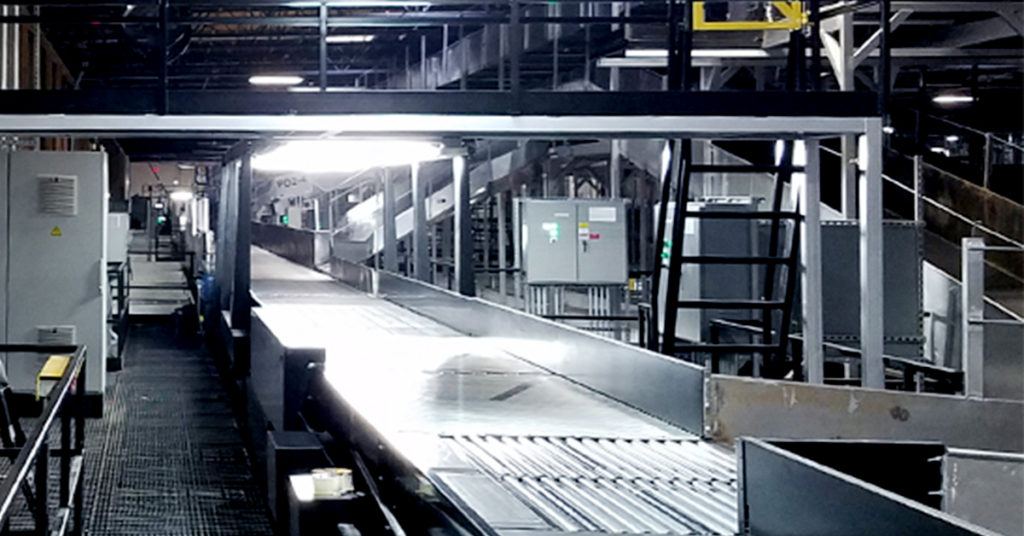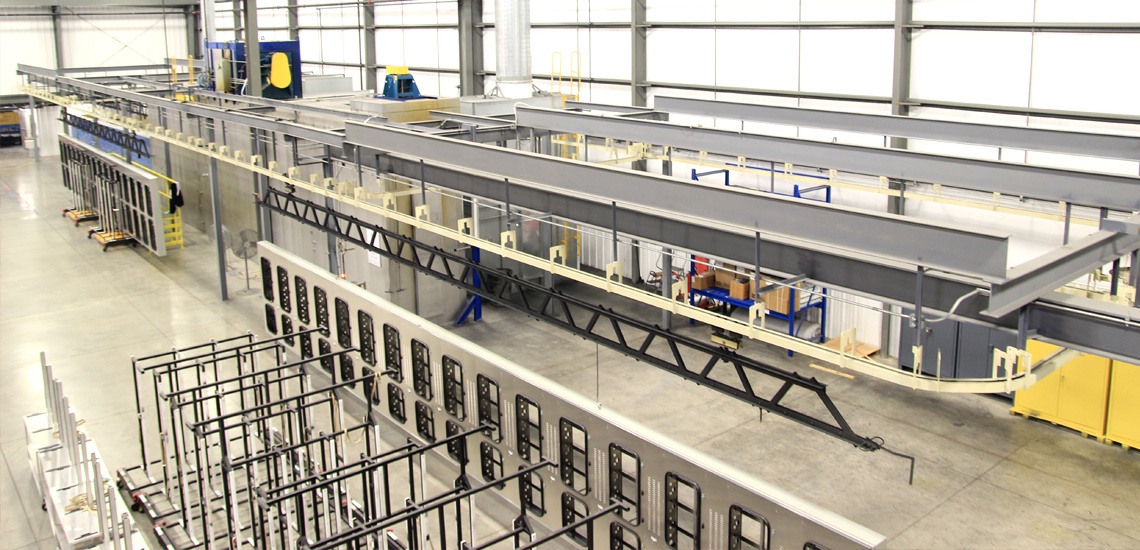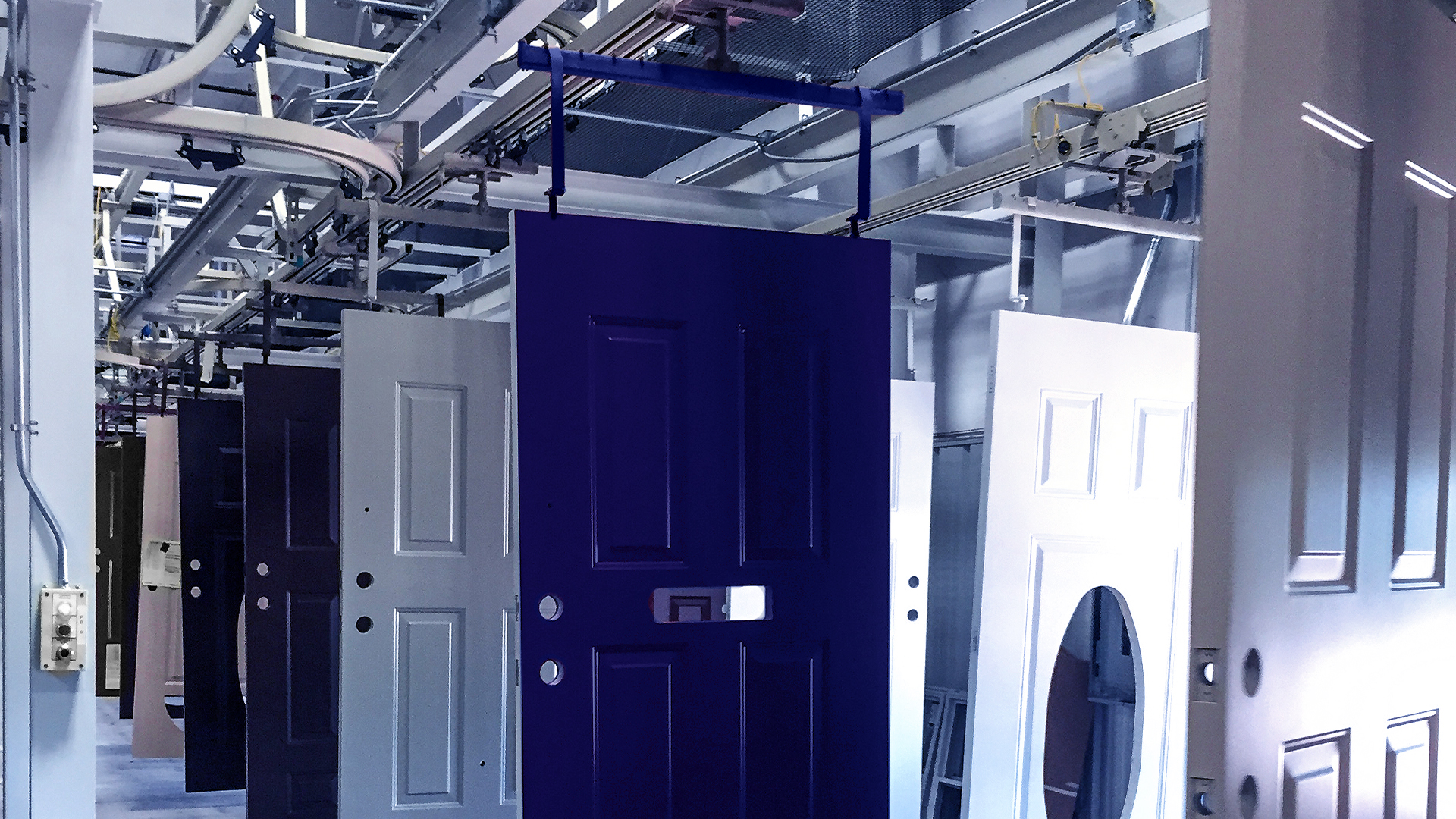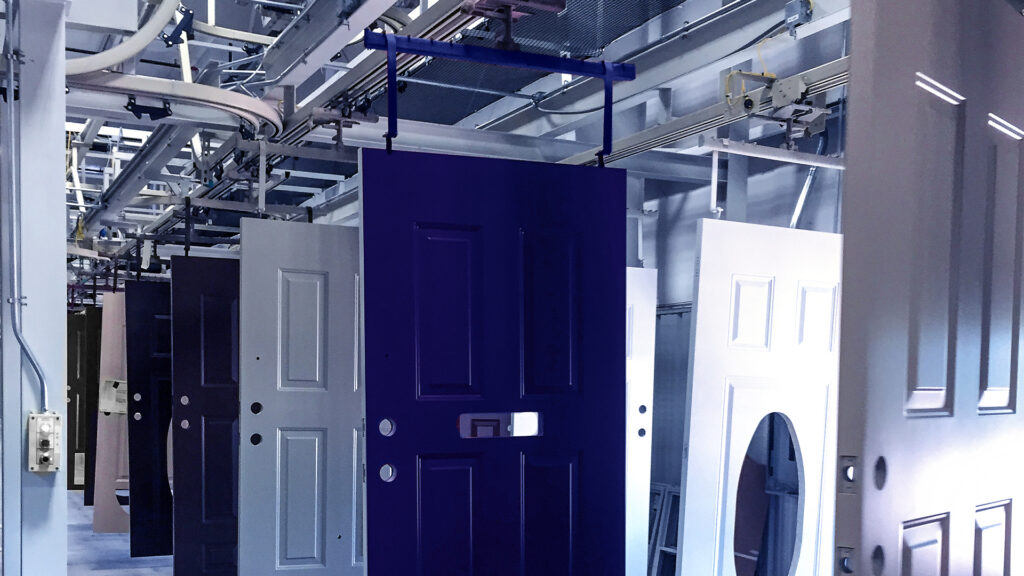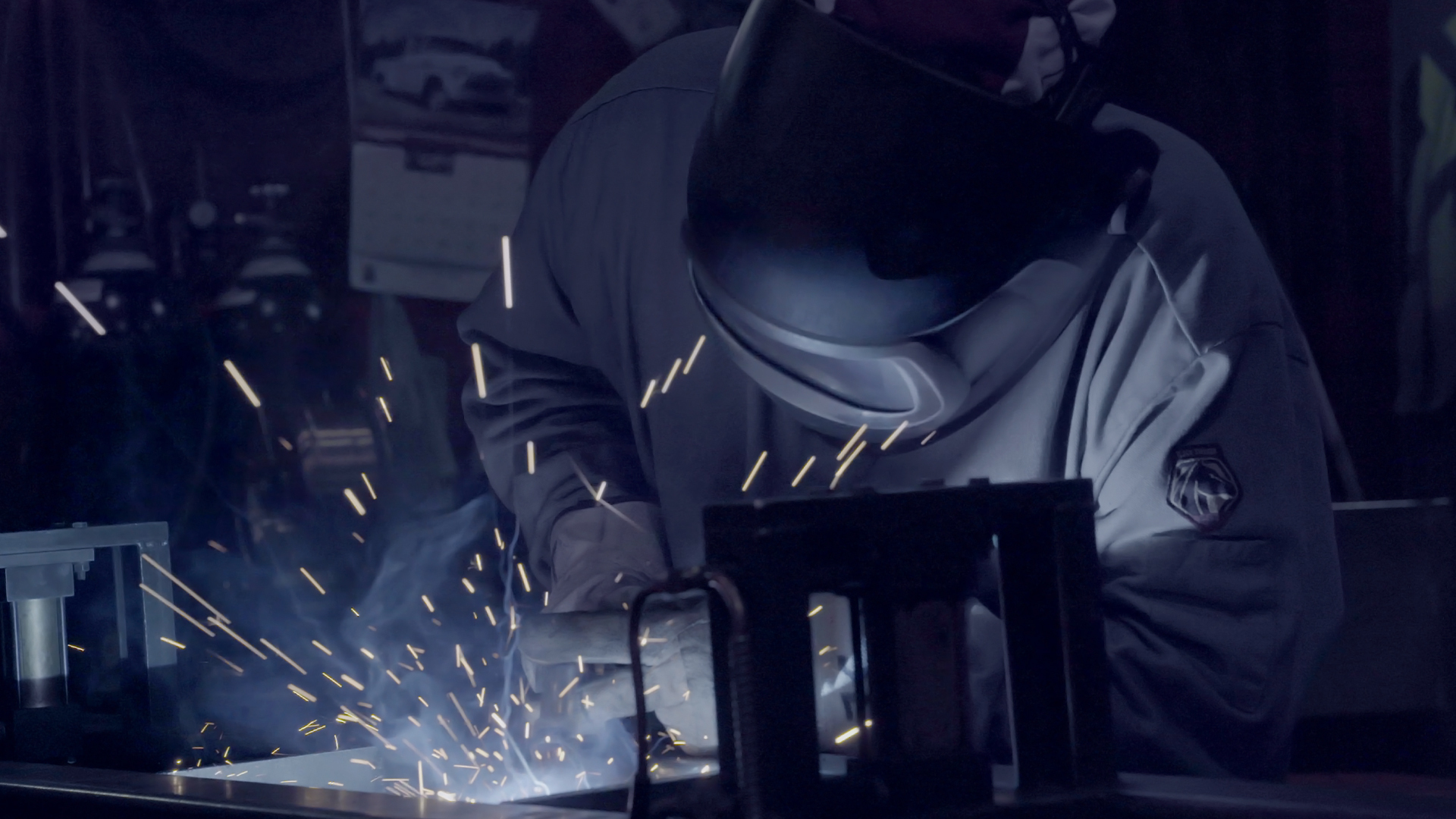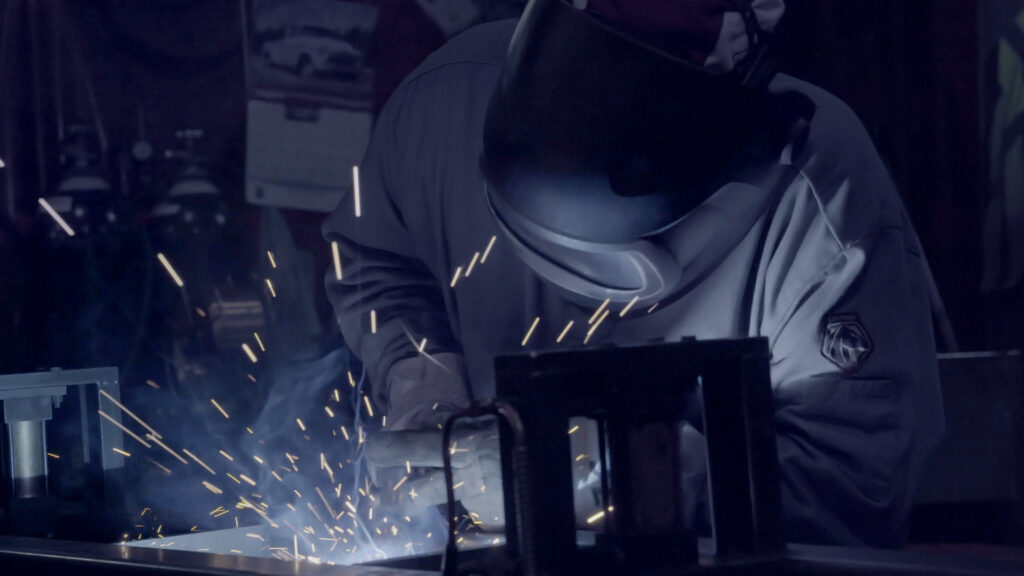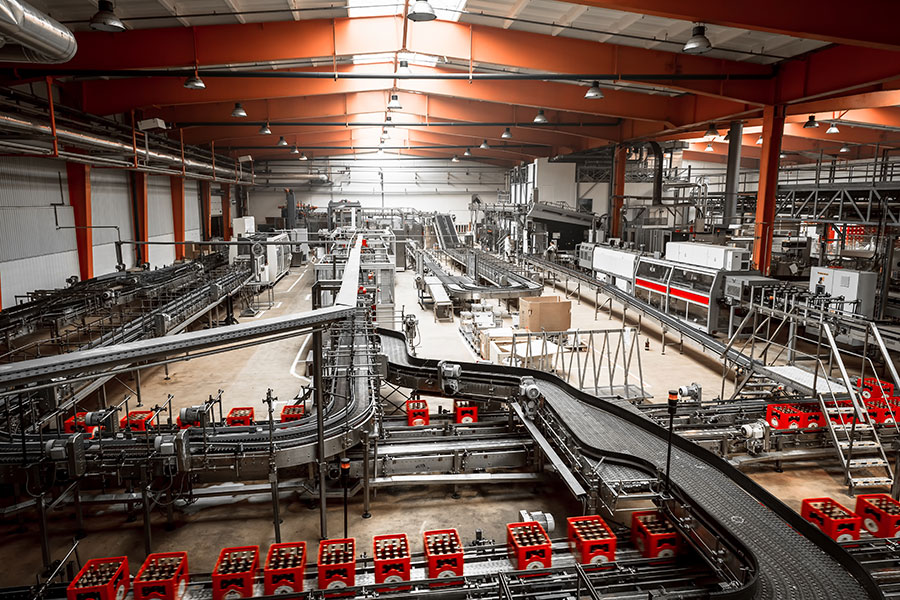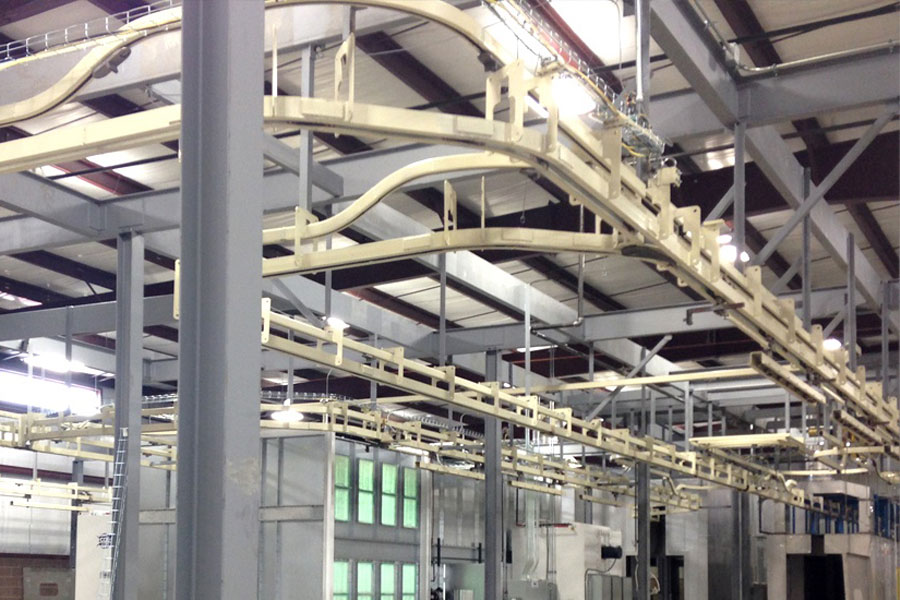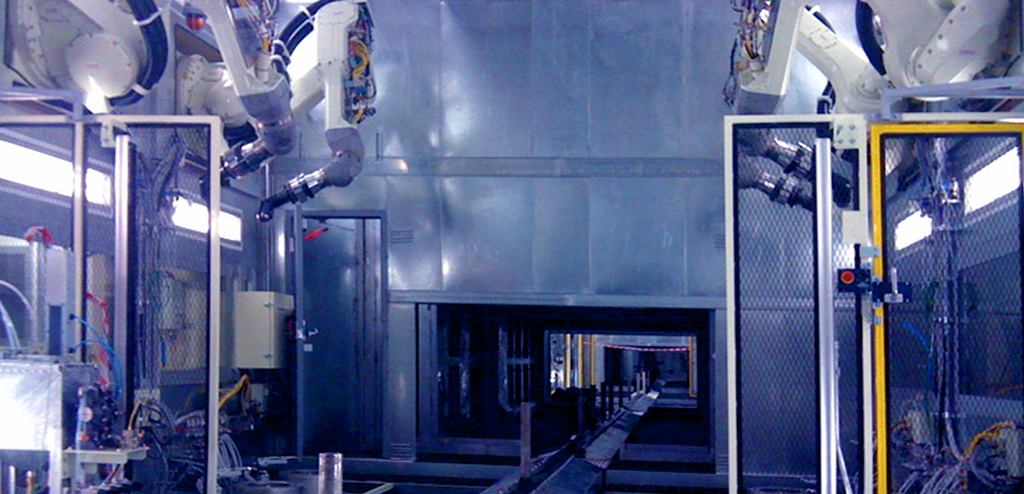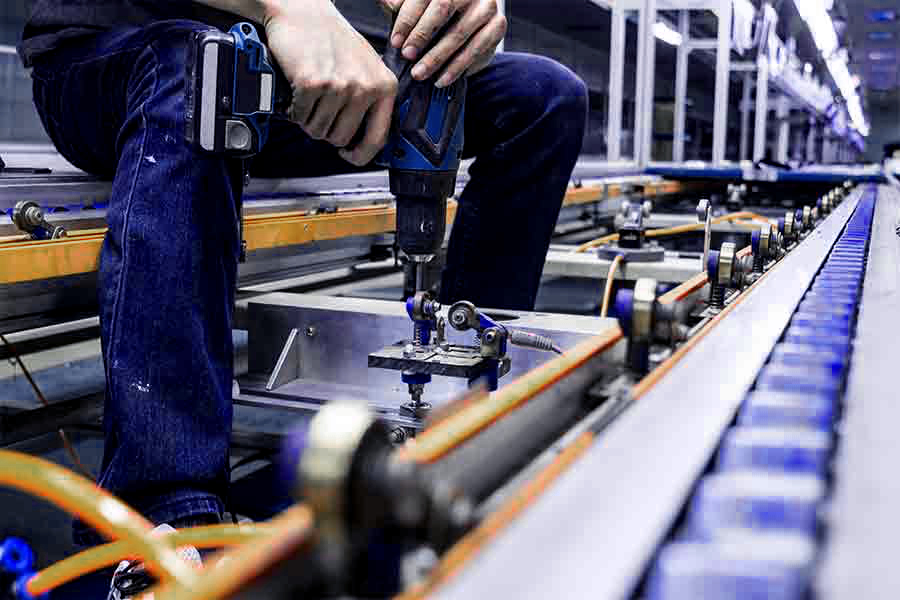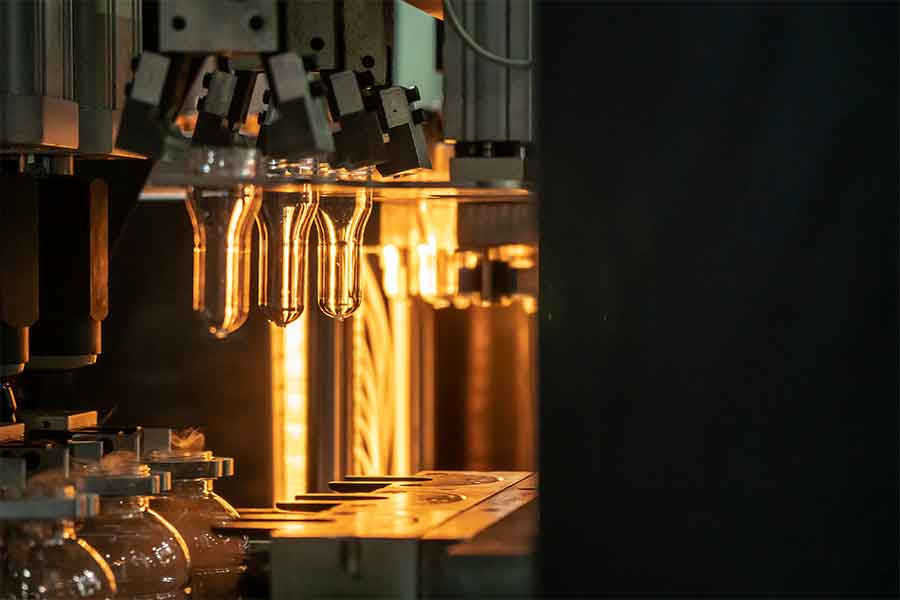Power and free conveyor systems, also typically referred to as asynchronous conveyor systems, are built on a two-track system where one track is powered and the other is not. This offers several advantages. Possibly the biggest advantage is that it allows loads to travel at different speeds and loads can be started or stopped independently of each other.
This provides enhanced flexibility in finishing systems and can make production processes more efficient and improve product quality. In this post, we’ll look at Richards-Wilcox Conveyor’s range of power and free conveyor systems in more detail.
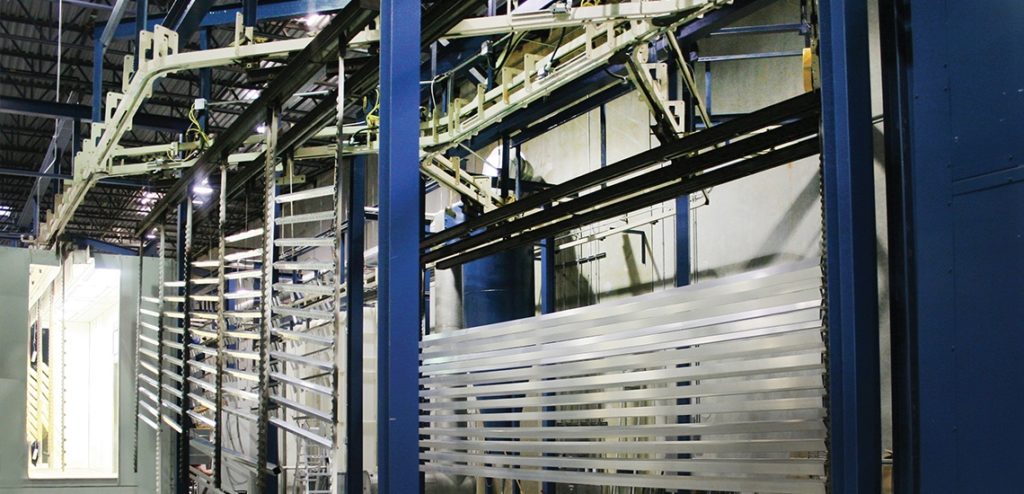
The Richards-Wilcox Range of Power & Free Conveyor Systems
The range of power and free conveyor systems provide unparalleled flexibility for a variety of parts and processes. Let’s look at our range in more detail.
Twin-Trak Side-by-Side Conveyor
The Twin-Trak Side-by-Side conveyor system is the ideal solution if you have limited overhead space and need to free up space for other power and free equipment. It features weight capacities that allow you to carry loads of 10 to 1,000 lbs, and, with the system, you can switch into and out of the main line of travel more frequently. In addition, you’re able to build the system from existing Richards-Wilcox systems, which, in turn, brings about a cost saving.
With its features, the Twin-Trak system can help you increase throughput by eliminating typical wait time and optimize production by ensuring the right parts arrive at the correct operations in a continuous flow. This ensures that you improve your efficiency while, at the same time, maintaining product quality.
Over-Way Heavy Duty Over and Under Conveyor
With a carriage capacity of up to 2,000 lbs in a tandem configuration, the Over-Way Heavy Duty Over and Under conveyor system combines power and flexibility with a heavy-duty over under conveyor configuration. This is a result of its rugged design and the fact that it’s constructed of high-quality components. For example, its enclosed track ensures that no contaminants enter the system and protects the chain from dirt, abrasion, and solvents.
These features, combined with its state-of-the-art control systems, allow you to optimize production and ensure that the right parts arrive at the right operations at the right time. It also eliminates unnecessary production rehandling and manual transporting and maintains a full log of production information. This results in the ability to increase efficiency and maintain production quality.
Over-Way Inverted Floor-Mounted Conveyor
The Over-Way Inverted Floor-Mounted conveyor is the ideal medium-capacity solution in robotic finishing systems, and combines power and capability with the flexibility of floor-mounted systems. The system is available as modular components that are pre-welded at the factory and, as such, is easy to install, maintain, and change.
Despite its ease of installation, the system’s self-supporting structure is designed with an additional guide track that provides enhanced stability where position accuracy is critical, and it offers weight capacities ranging from 10 to 1,000 lbs.
The system is also designed to keep products clean and provides optimal ergonomics in that the work surfaces can be adjusted. Ultimately, by integrating processes typically serviced by multiple types of conveying equipment, it’s able to optimize production while reducing energy expenditure.
The Bottom Line
Hopefully, you’ve now learned more about our range of power and free conveyor systems and how they can help you make your finishing processes more efficient. To learn more about these systems, get in touch.
With extensive experience, our expert staff can help you engineer a finishing system based on your unique needs, requirements, and budget that will improve your production quality, make your operations more efficient, and help deliver higher quality products.
